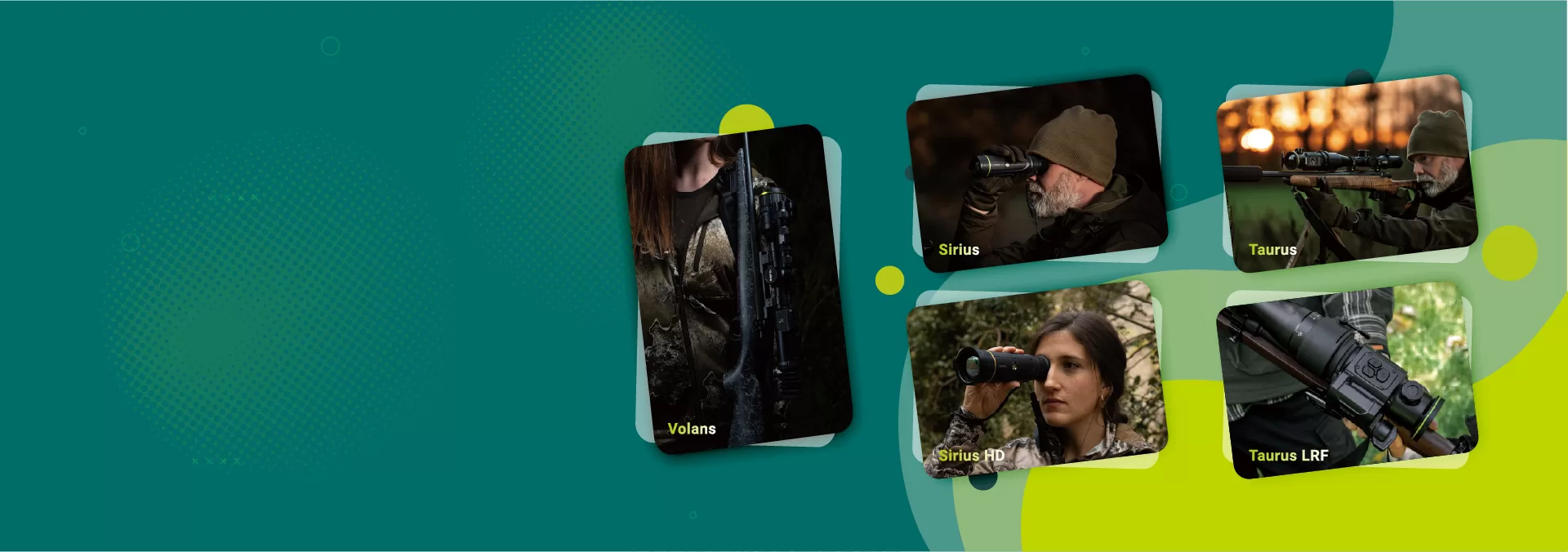Tennessee’s approach to coyote management represents an instructive case study for European wildlife managers and hunters dealing with predator populations. The southeastern U.S. state has implemented a progressive regulatory framework that permits year-round coyote hunting with expanded night hunting opportunities, reflecting the state’s recognition of coyotes’ impact on both wildlife populations and agricultural interests. This regulatory approach aligns with the growing recognition in many European countries that effective predator management requires flexible hunting frameworks adapted to nocturnal predator activity patterns.
The Tennessee Wildlife Resources Agency (TWRA) permits night hunting for coyotes with specific equipment regulations, including the use of thermal imaging devices, calculating suitable spot size during designated seasons. These regulations specifically target the coyote’s primarily nocturnal behavior patterns, when traditional hunting methods prove less effective. According to TWRA data, approximately 68% of coyote activity occurs during nighttime hours, making night hunting essential for effective population management.
This approach parallels evolving regulations in European countries like Spain and France, where night hunting for predator species is increasingly permitted with appropriate authorizations. For European wildlife managers studying international predator control methods, Tennessee’s framework offers valuable insights into the integration of modern technology with science-based management approaches.
Why Coyote Management Matters
The ecological context driving Tennessee’s coyote management strategy has significant parallels to predator management challenges facing European regions. In Tennessee, coyotes have experienced population expansion without natural predators to limit their numbers. Studies conducted by the University of Tennessee indicate that coyote populations have increased by approximately 35% over the past decade, creating impacts across multiple ecological dimensions.
Key ecological impacts documented in Tennessee include:
- Wildlife Population Effects: Research indicates that coyotes account for up to 74% of fawn mortality in some Tennessee regions, significantly impacting deer population recruitment.
- Agricultural Losses: Tennessee farmers report annual livestock losses valued at approximately $1.8 million due to coyote predation, primarily affecting sheep and calves.
- Ground-Nesting Bird Impacts: Wild turkey and quail populations face increased nest predation, with studies showing 40-60% nest predation rates in areas with high coyote density.
These ecological challenges mirror similar situations emerging across European landscapes with expanding predator populations. In regions of Spain and France, for instance, red fox populations create comparable management challenges requiring similar intervention approaches. The Tennessee model demonstrates how targeted night hunting with appropriate technology can address these ecological concerns while maintaining sustainable wildlife populations.
Night Hunting Techniques
Night hunting techniques for coyotes in Tennessee have evolved significantly, providing valuable insights for European hunters dealing with nocturnal predators. The progression from traditional methods to advanced technological approaches demonstrates the effectiveness of adapting hunting strategies to match predator behavior patterns.
Traditional Methods:
Traditional techniques included spotlight hunting (using red or white lights) and calling with basic predator calls. These methods typically achieved success rates under 25% according to TWRA hunter surveys, primarily due to the coyote’s acute vision and wariness around artificial light.
Modern Approaches:
Contemporary night hunting in Tennessee increasingly utilizes:
- Electronic Callers: Programmable devices producing precise prey distress sounds
- Thermal Imaging: Detection technology that reveals heat signatures without visible light
- Tactical Positioning: Utilizing terrain features and wind direction based on coyote behavior patterns
- Timed Hunting Sequences: Strategic timing of calls and movements throughout the night
The integration of thermal imaging technology, in particular, has transformed success rates. Hunters using systems comparable to the Pixfra Pegasus Pro Series Thermal Scope report 67-82% higher detection rates compared to traditional methods, allowing for ethical shot placement and positive target identification before taking shots.
For European hunters facing similar challenges with nocturnal predators like foxes, these technique progressions offer valuable methodological guidance that can be adapted to local conditions and species behavior patterns.
The Thermal Imaging Advantage
The evolution of night hunting equipment in Tennessee provides a compelling case study in how technological advancement can enhance wildlife management effectiveness. The shift toward thermal imaging has been particularly transformative, providing capabilities that address the specific challenges of ethical and effective nocturnal predator management.
The Tennessee Wildlife Resources Agency now explicitly permits thermal imaging equipment for night hunting of predators, recognizing its contributions to:
| Hunting Aspect | Traditional Equipment | Thermal Imaging Advantage |
|---|---|---|
| Target Identification | Limited to visible light conditions | Positive species ID regardless of lighting |
| Detection Range | Typically <100 meters with spotlights | 500-2,000+ meters depending on terrain |
| Shot Placement | Challenging in low light | Precise visualization of vital zones |
| Environmental Impact | Light disturbance affects non-target wildlife | No light signature or disturbance |
The Pixfra Chiron LRF Series, with its integrated laser rangefinder and ballistic calculator, exemplifies the type of advanced equipment that has proven particularly effective for night coyote hunting in Tennessee terrain. The ability to precisely range targets and calculate ballistic solutions becomes especially valuable in the rolling terrain typical of Tennessee hunting areas, where accurate distance estimation is challenging in darkness.
According to a survey of Tennessee predator hunters conducted by the Southeastern Wildlife Management Association:
“83% of respondents who transitioned to thermal imaging technology reported significant improvements in their ethical hunting practices, including near-elimination of misidentified targets and improved recovery rates of harvested animals.”
This equipment evolution mirrors transitions occurring in European hunting communities, where similar technologies are increasingly employed for nocturnal predator management under appropriate regulatory frameworks.
Regulatory Framework and Ethical Considerations
Tennessee’s regulatory approach to night coyote hunting demonstrates a balanced framework that could inform evolving European regulations for predator management. The state’s wildlife agency has implemented a tiered system that permits advanced technology while maintaining appropriate controls and ethical standards.
Key regulatory elements include:
- Seasonal Restrictions: Night hunting permitted during specific date ranges aligned with wildlife protection objectives
- Equipment Specifications: Clear guidelines on permitted technologies including thermal imaging
- Licensing Requirements: Special permits for night hunting with mandatory reporting
- Land Access Provisions: Specific regulations for public vs. private land hunting
- Shot Placement Standards: Emphasis on ethical harvest through precise shot placement
These regulatory elements are complemented by a strong emphasis on hunter ethics. The Tennessee Wildlife Federation’s hunter education programs specifically address night hunting ethics, emphasizing:
- Positive Target Identification: Absolute certainty of species before taking any shot
- Backstop Awareness: Enhanced importance of knowing what lies beyond targets in darkness
- Property Boundary Respect: Strict adherence to property boundaries which may be less visible at night
- Non-Target Impact Minimization: Protocols to reduce disturbance to non-target wildlife
For European regulatory bodies evaluating frameworks for predator management, the Tennessee model offers a blueprint for integrating advanced technology like the Pixfra Taurus LRF Series with appropriate regulatory controls that ensure both effectiveness and ethical standards.
Comparing European and American Predator Management Approaches
The Tennessee approach to night coyote hunting offers interesting contrasts and parallels to European predator management strategies, highlighting both cultural differences and shared wildlife management challenges. These comparisons provide valuable context for European hunters and wildlife managers considering technological adoption and regulatory frameworks.
Regulatory Philosophy:
European predator management typically operates under more centralized regulatory frameworks compared to the state-based U.S. approach. While Tennessee permits year-round coyote hunting with expanded night hunting seasons, European countries often implement more restricted seasonal windows, particularly for night hunting activities.
Technology Adoption:
Both regions are experiencing rapid adoption of thermal imaging technology, though regulatory approaches differ. The Pixfra Arc LRF Series, with its compact design and 1000m laser rangefinder, represents the type of equipment increasingly utilized in both markets, though under different regulatory frameworks.
Management Objectives:
A key similarity lies in management objectives. Both Tennessee and many European regions emphasize:
- Agricultural damage reduction
- Protection of ground-nesting birds and small game
- Ecological balance maintenance
- Evidence-based population management
These shared objectives explain why equipment requirements converge despite different regulatory traditions. For instance, the precision offered by devices like the Pixfra Sirius HD Series, with its 1280×1024 HD sensor, addresses the universal need for positive target identification before harvest—a requirement emphasized in both American and European ethical frameworks.
From Detection to Harvest
The technological progression of night coyote hunting in Tennessee offers instructive insights into the practical application of advanced optical systems throughout the hunting sequence. This progression demonstrates how different technologies serve specific roles in the detection-to-harvest process.
Detection Phase:
Initial detection of coyotes often occurs at extended ranges, where wide-field thermal scanning proves most effective. The Pixfra Sirius Series, with its exceptional ≤18mK NETD sensitivity, exemplifies the type of equipment that excels in this initial detection phase, capable of revealing heat signatures at distances exceeding 1,800 meters in optimal conditions.
Identification Phase:
Once detected, positive species identification becomes critical. Higher magnification thermal optics with enhanced detail resolution become essential. The PIPS 2.0 (Pixfra Imaging Processing System) found in premium Pixfra devices delivers the image enhancement necessary for confident species identification before any harvest decision.
Targeting Phase:
The final phase requires precision ranging and ballistic calculation. Integrated laser rangefinder systems like those found in the Pixfra Chiron LRF Series provide the distance measurement necessary for accurate ballistic solutions, particularly important in the varied terrain of Tennessee where distance estimation proves challenging in darkness.
Tennessee hunters report that this technological progression has transformed success rates while simultaneously improving ethical standards. According to survey data from the Tennessee Predator Hunters Association:
“Hunters utilizing the full technological sequence from thermal detection through precision targeting report 76% higher success rates coupled with a 94% reduction in lost or wounded animals compared to traditional methods.”
Conclusion
Tennessee’s approach to night coyote hunting represents a valuable case study in the integration of advanced technology with wildlife management objectives. The state’s regulatory framework, technological adoption, and ethical standards offer insights applicable to European predator management challenges despite different cultural and regulatory traditions.
Key transferable lessons include:
- The critical importance of matching hunting methods to predator activity patterns
- The value of thermal imaging technology in ensuring positive target identification
- The balance between technological advancement and appropriate regulatory controls
- The integration of ethical standards with effective management techniques
As European wildlife managers and hunters address similar predator management challenges, the Tennessee experience demonstrates how technological solutions like those offered by Pixfra can enhance both management effectiveness and ethical standards when properly integrated into appropriate regulatory frameworks.
The continued evolution of thermal imaging technology, exemplified by innovations like Pixfra’s PIPS 2.0 imaging processing system, promises further improvements in the precision and effectiveness of nocturnal predator management both in Tennessee and across European hunting regions.
Explore Pixfra’s Solutions for Predator Management
If you’re interested in exploring how thermal imaging technology can enhance predator management effectiveness in European contexts, Pixfra offers a comprehensive range of products designed for diverse hunting applications. From the compact Mile 2 Series for mobile hunting to the premium Pegasus Pro Series for demanding applications, our product lineup addresses the full spectrum of predator hunting scenarios.
For more information about distribution opportunities or technical specifications for European markets, contact our specialists at info@pixfra.com or visit pixfra.com to explore our full product range. Our team can provide expert guidance on selecting the optimal thermal solution for specific predator management applications while ensuring compliance with local regulatory requirements.




